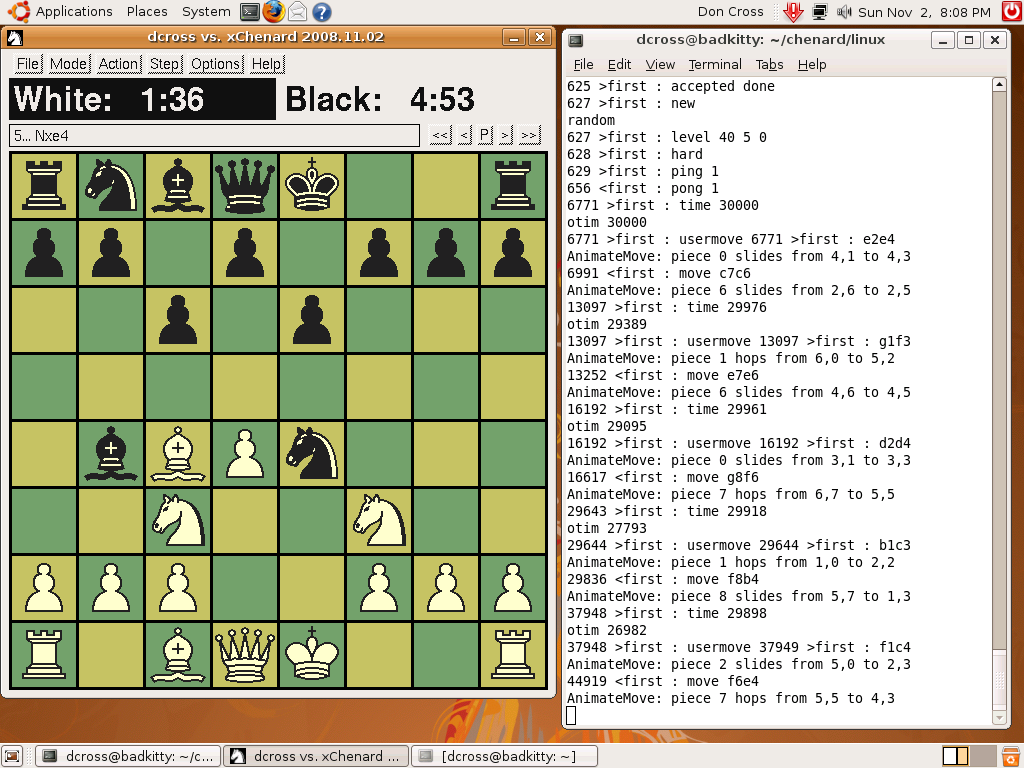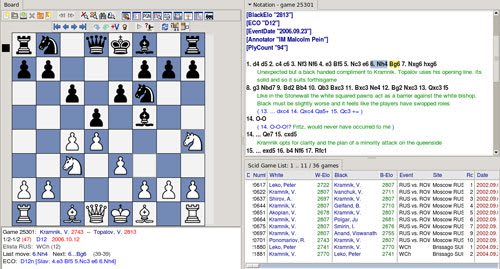Algorithm For Chess Program
What is the best or alternative ways to detect game phase by a chess AI? What is a good algorithm to use? Chess programming wiki says to count material or pieces? What would be the expected piece. Nov 7, 2011 - The minimax algorithm finds the best move, and alpha-beta pruning prevents it. Lots of algorithms that are used within chess programming are described on.
Chess AI Chess Algorithms The program implements the following concepts and algorithms: 1. Back to page. Board Representation The chessboard is represented in the simplest possible manner - as an 8 by 8 matrix, each containing a Piece (with a 'blank' piece representing empty board spaces). Furthermore, flag variables keep track of whether queen/king side castling is allowed for each player, and whether an en-passant capture move is allowed at a given point in time. In order to save space and time during the min-max search, its optimal not to have separate board instance at each branch.
After all, they differ only by the position of one piece. Hence each move contains information not only about which piece was moved from where to where, but also whether it affected castling, en passant, and whether it captured an enemy piece in the process. Thus reversing a move on a board is very simple. The algorithm thus only needs one board object, on which it makes and reverses all the moves it considers during its search. Advanced chess playing programs have far more clever board representations, which operate on bits. Separate instances are kept to keep track of individual pieces, and often bit-wise operations can reveal a lot of information about board positions very quickly (particularly with respect to pawns).

Years of research have been spent trying to optimize these representations for speed. Min-max Searching The core of the chess playing algorithm is a local min-max search of the gamespace. The algorithm attempts to MINimize the opponent's score, and MAXimize its own. At each depth (or 'ply' as it's as its referred to in computer chess terminology), all possible moves are examined, and the static board evaluation function is used to determine the score at the leafs of the search tree.
These scores propagate up the tree and are used to select the optimal move at each depth. The bigger the ply, the better the chosen move will be (as the algorithm is able to look ahead more moves). The branching factor is typically between 25 and 40 moves per ply (the average is around 35). Alpha-beta Pruning This common pruning fuction is used to considerably decrease the min-max search space. It essentially keeps track of the worst and best moves for each player so far, and using those can completely avoid searching branches which are guaranteed to yield worse results.
Using this pruning will return the same exact moves as using min-max (i.e. There is no loss of accuracy). Ideally, it can double the depth of the search tree without increasing search time. To get close to this optimum, the available moves at each branch should be appropriately sorted.

The sorting is done by the looking at the scores of each possible move, looking only 1 ply ahead. The intuitive sort would be to arrange them from best to worst, but that's not always best.
Most moves in chess end up being ones with small gains and losses (ones that improve position, not necessarily capturing pieces), so it makes sense to order the 'stand pat' moves first. So the sorting is based on the absolute value of the move scores (with the smaller ones coming first). Cara install web server di windows server 2003. The average branching factor for min-max in chess is about 35, but with the alpha-beta pruning and sorting, the program acheives a branching factor of around 25. Null Move Heuristic This simple heuristic improves the beginning of the alpha-beta search.
Initially, there are no values for what the worst and best possible moves are, so they default to negative and positive infinity respectively. But using this heuristic the algorithm can find an initial lower bound on the best moves.
It lets the opposing player play two moves in sequence (choosing them based on a small-ply min-max search), and computes the score after that. Certainly, any move made by the current player should beat a score obtainable by the opponent getting two chances to move. Quiescence Searching Since the depth of the min-max search is limited, problems can occur at the frontier.
A move that may seem great may actually be a disaster because of something that could happen on the very next move. Looking at all these possibilites would mean increasing the ply by 1, which is not the solution, as we would need to extend it to arbitrarily large depths. The goal is thus to search the tree until 'quiescent' positions are found - i.e ones that don't affect the current positions too much (most maneuvers in chess result in only slight advantages or disadvantages to each player, not big ones at once). Hence, looking at higher depths is important only for significant moves - such as captures. Consider for example a move in which you capture the opponent's knight with your queen.